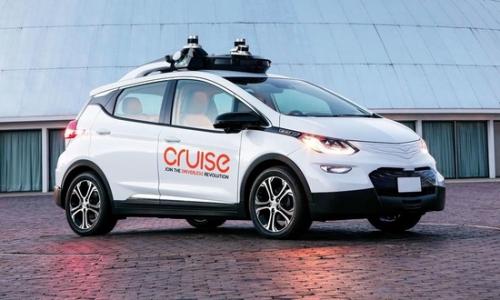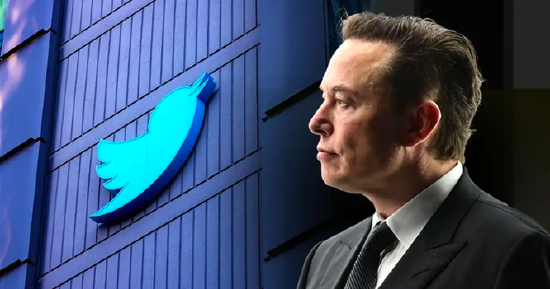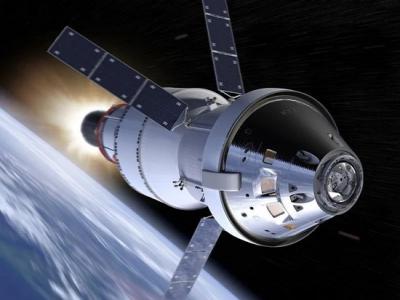your current location is:Home > Finance > depthHomedepth
Silicon Valley Secrets
Silicon Valley, synonymous with innovation, the concentration of high-tech companies, the symbol of wealth creation.
Two of the top four universities in the world ranked by U.S. News and World Report in 2019 are in Silicon Valley, Stanford University and the University of California, Berkeley. Three of the five most valuable companies in the world in 2018 are in Silicon Valley, namely Apple, Google (Alphabet) and Facebook. In 2017, the per capita output value of the San Jose metropolitan area, the core of Silicon Valley, was 128,000 US dollars. If it is regarded as a country, its wealth is second only to Qatar in the world.
What's the secret to creating Silicon Valley's glory?
Xinhua News Agency reporter Ma Xiaocheng spent a year at the University of California, Berkeley from 2018 to 2019. During this period, he visited many technology companies and venture capital institutions in Silicon Valley, interviewed many participants and observers of Silicon Valley innovation, and read A large number of books, research reports and news reports have conducted an in-depth interpretation and systematic review of the Silicon Valley innovation code.
Graphic | Ma Xiaocheng
Editor | Xie Fang Lookout Think Tank
This article is an excerpt from the Lookout Think Tank book, excerpted from "Decoding Silicon Valley" (published by Machinery Industry Press in November 2019). The original title is "Silicon Valley".
1
Three characteristics
Open the world map. On the east coast of the Pacific Ocean and the San Francisco Bay of California in the west of the United States, there is a narrow strip extending from San Francisco to the south to San Jose. With Stanford University as the center, the north-south length is about 100 kilometers. This is the world-famous high-tech Capital - Silicon Valley.
Silicon Valley does not have a clear geographic definition, it is not a unified administrative region, and it does not have a single local government management. However, there is a non-profit organization called Joint Venture Silicon Valley, whose annual "Silicon Valley Index" (Silicon Valley Index) has become a leading vane for tracking Silicon Valley.
According to the definition of the Silicon Valley Index, early Silicon Valley only included Santa Clara County and parts of San Mateo, Alameda, and Santa Cruz counties adjacent to Santa Clara County. Later, the scope of Silicon Valley continued to expand. Since 2009, the Silicon Valley Index has included the entire San Mateo County. Since then, because of the booming technology industry in downtown San Francisco, San Francisco has also been included in the statistical scope of the Silicon Valley Index. Now, the generalized Silicon Valley can also include the entire San Francisco Greater Bay Area.
In addition to San Francisco, another major city in Silicon Valley is San Jose, whose urban population is second only to Los Angeles and San Francisco in California, and ranks tenth in the United States. From San Jose to the northwest, major cities in Silicon Valley also include Santa Clara where Intel is located, Sunnyvale where Yahoo is located, Cupertino where Apple is located, Mountain View where Google is located, Palo Alto where Stanford University is located, Menlo Park, where Facebook is located, Redwood City, where Oracle is located, etc.
1. "Luxury" climate
If you ask someone new to Silicon Valley about their first impression of this place, almost everyone will be impressed by the sunshine and climate of California. Sunshine is arguably the most obvious label of California, so California is often referred to as the "Golden State", and one of California's NBA teams is the "Golden State Warriors". UC Berkeley has two official colors, one of which is gold, which represents the California sunshine.
California, where Silicon Valley is located, has a typical Mediterranean climate. The region with this climate only occupies 2% of the world's land area, which can be called a "luxury" climate. It is distributed on the west coast of the continent from 30 degrees to 40 degrees north and south latitude, including the Mediterranean coast, the Black Sea coast, California, the United States, Perth and Adelaide in the southwest of Australia, southwestern South Africa, and central Chile. The most typical and named after the coastal area.
Statistics from 2008 to 2015 show that the coldest months in Silicon Valley are December and January, with an average minimum temperature of 5 degrees Celsius and a maximum of about 15 degrees Celsius. The hottest months are July and August, with lows of 14 degrees Celsius and highs of 25 degrees Celsius. There is basically no rain from May to September, and the rainfall is concentrated from December to January of the following year, with an average rainfall between 30 mm and 40 mm.
The climate of California played an important role in the formation of Silicon Valley, and many people were attracted by the climate of Silicon Valley. Frederick Terman, who played an important role in the development of Silicon Valley, returned to Silicon Valley after his studies in Boston, largely because the climate here was conducive to his recovery.
Paul Graham, who founded Y Combinator, a well-known accelerator in Silicon Valley and is known as the "Godfather of Silicon Valley Entrepreneurship", mentioned in his well-known article "How to be Silicon Valley" that why computer Carnegie Mellon University with strong academic strength has not formed an innovation district around it? The simple answer is that the weather in Pittsburgh, where it is located, is so bad, especially in winter, that no one wants to live there. Even though there are strong tech geeks who can start businesses, no one is going to invest in them.
2. Bright economy
If California, where the San Francisco Bay Area is located, is regarded as a country to participate in the global economic rankings, its total economic output in 2017 can be ranked fifth in the world. Why is California's economy so strong? Among them, the contribution of the technology industry in the San Francisco Greater Bay Area is indispensable.
According to statistics from the San Francisco Bay Area Council, in 2017, the GDP of the San Francisco Greater Bay Area was close to $800 billion, making it the third largest metropolitan area in the United States, after New York and Los Angeles.
If the San Francisco Greater Bay Area is regarded as a state in the United States, its economy can be ranked sixth among all states in the United States. If it is regarded as a country or a separate region, it can be ranked within 20 in the world, higher than Switzerland and Saudi Arabia. Benefiting from the high growth of the technology industry, the economic growth rate of the San Francisco Bay Area is eye-catching. In the three-year period from 2015 to 2017, its economic growth rate was 4.3%, nearly double the national economic growth rate in the same period.
Since China officially launched the construction of the Guangdong-Hong Kong-Macao Greater Bay Area in 2018, the San Francisco Greater Bay Area has also become the benchmark for the construction of the Greater Bay Area in China. The following is a comparison of the main data of the four major bay areas in the world in 2017.
It can be seen from this that although the San Francisco Greater Bay Area is the smallest among the four Bay Areas in terms of land area, population, and total GDP, it is far ahead in terms of per capita GDP, which is more representative of the quality of development, and its economic growth rate is far ahead. It is also second only to the Guangdong-Hong Kong-Macao Greater Bay Area, and far higher than the other two bay areas that are also located in developed regions.
According to an analysis by Business Insider, the U.S. business news website, the San Jose and San Francisco metropolitan areas in the Silicon Valley area were the top two areas in the U.S. with the strongest economies in 2017. Silicon Valley is also a high concentration of venture capital, and the two metropolitan areas have received 40% of venture capital in the United States.
Additionally, the typical San Francisco household earns $97,000 a year, nearly double the national median household income of $58,000, according to the National Bureau of Statistics.
3. "Dazzling" companies
Silicon Valley is synonymous with high-tech companies, and high-tech is also the most distinctive feature of Silicon Valley. So how integrated are Silicon Valley companies already in our lives? To answer this question, we might as well follow a day in the life of Jim, an engineer working at a Silicon Valley technology company.
In the morning, the alarm clock on one of Apple's iPhones wakes Jim up from his sleep, and his day starts with answering emails. Jim turned on his laptop with an Intel chip, opened his browser, got into Google's Gmail mailbox, and responded to emails.
After breakfast, Jim drove out to work in a Tesla.
The company's computer systems use Oracle's data services. He completes a project proposal on his work computer, saves it as an Adobe PDF file, puts the document on a SanDisk USB stick, and transfers it to an HP printer print it out. After that, he was going to meet a client in downtown San Francisco. Considering the difficulty of parking in the city, he called an Uber to go out. When he was done, he called another ride-hailing company, Lyft, back to the company.
It's lunchtime and Jim doesn't want to eat in the company cafeteria, he wants to order takeout. So I went to Yelp, a review site, to see what customers said about the restaurant and place an order. During lunch, he wanted to see if there was anything fun to do at night. He visited the online event planning website Eventbrite and saw that there was an NBA Golden State Warriors basketball game on the weekend, so he logged on to the ticketing website Stubhub and used the online payment platform PayPal. , bought the ticket in a few minutes.
Continuing to work in the afternoon, Jim felt that the computer was running a little slow, so he used Symantec's antivirus software to conduct a physical examination and antivirus on the computer. Jim is about to have a video conference call with a new partner. Before the meeting, he logged into Linkedin and looked at the partner's resume. A video conference was then conducted using Zoom's software.
Night is a time to relax. Jim opened the refrigerator and found that there was no drink at home, so he placed an order on eBay, which showed that it would be delivered to the house in two days. He visits the website of the video service provider Netflix to watch the latest American TV series while chatting with friends on Facebook and Twitter. Before going to bed, he looked at Google Calendar to see what was on the agenda for tomorrow.
Jim is a fictional character, but his life shows how technology companies have penetrated every aspect of people's lives. The companies mentioned above all share a common geographic location: Silicon Valley.
2
Centennial History Extension
It is hard to imagine that the heart of the world's high-tech industries, now called "Silicon Valley", was an orchard until more than 60 years ago. The historic changes here occurred after the Second World War, on the eve of the global information technology revolution. The times create heroes, and Silicon Valley moves with the trend of the times, and Silicon Valley also shapes the times.
1. "Happy Valley"
For a long time, the land now known as Silicon Valley has been inhabited by Indians. In the 1840s, many people came to California because of the "gold rush". But there are only a few lucky people who can find gold. When many "gold diggers" were about to return in disappointment, they found another kind of "gold" around the gold rush field-a holy tower with fertile soil and suitable for growing crops Clara Valley, and settled down. In 1850, small villages began to form in Santa Clara.
Because of the beautiful scenery, pleasant climate, and countless fruit trees, it is known as the " Valley of Heart's Delight", and related industries around fruit have begun to develop. In 1869, with the completion of the Trans-Pacific Railroad, the fruit here began to be shipped to other parts of the United States. In 1906, the population here grew to 5,000.
By the 1920s and 1930s, the fruit industry here was already quite prosperous: 18 canneries, 13 factories packing dried fruit, and 12 logistics companies shipped fresh fruit and vegetables around the world. The thriving fruit industry required a large number of workers that the local labor market could not satisfy, and early Chinese and Japanese immigrants filled the void. Subsequently, more immigrants came here, including Italians, Eastern Europeans, Filipinos and Mexicans, etc., further forming the immigrant culture of Silicon Valley.
2. The early rise of the electronics industry
Many people trace the origin of Silicon Valley back to the founding of Hewlett-Packard in 1939, or the founding of Varian Associates in 1948, and believe that Silicon Valley has leaped from an agricultural region to a conventional development stage to become the world's technological industrial center. This claim ignores Silicon Valley's early industrial base.
In fact, the industrial foundation of Silicon Valley can be traced back to the early 20th century . With the maturity of telegraph, radio communication, telephone and other technologies, Silicon Valley has emerged in these electronic industrial technologies and laid a solid foundation for the subsequent rapid development.
In 1909, Cyril Elwell, a graduate of Stanford University's electrical engineering program, founded the Federal Telegraph Company, which was acquired by Stanford's first president, David Starr Jordan. Starr Jordan).
Elwell first developed a new wireless voice communication technology and established an experimental line between Stockton, not far from Stanford University, and Sacramento, the capital of California, inviting the public to experience it, causing confusion. Small sensation. At the time, the mayor of Sacramento, some wealthy Chinese businessmen and local bank executives all tried the technology. Subsequently, the project received external financial support, and the Federal Telegraph Company was formally established.
In 1912, the Federal Telegraph Company was quickly awarded a contract by the U.S. Navy for long-distance communications between ships, due to its technological superiority over its competitors. During the First World War, the US Navy not only purchased a large number of the company's products, but also continuously asked the Federal Telegraph Company to upgrade its technical parameters to meet the increasingly complex war needs.
To further boost power and technology maturity, Federal Telegraph used labs at Stanford University and the University of California, Berkeley. In exchange, the company donated radio communication equipment to the school, and the professors used the equipment to do insulation experiments on objects, and published papers based on the experimental results. It can be seen from this process that the early practice of industry-university interaction in Silicon Valley has already begun in the Federal Telegraph Company.
With the end of World War I, Navy orders plummeted, and the Federal Telegraph Company ended its golden age and was forced to start looking for new commercial contracts. At that time, they also wanted to build a trans-Pacific communication system for China, and signed a cooperation agreement with China for this purpose, but because of the political turmoil in China at that time, this plan was ultimately not realized. In the mid-1920s, the Federal Telegraph Company was acquired. However, the Federal Telegraph Company also spawned several start-ups during its brief independent operation.
In addition to the Federal Telegraph Company, in the 1930s and 1940s, Silicon Valley developed in the fields of short-wave wireless communications, television, tape recorders, etc., and already had a place on the map of the American electronics industry.
The former site of the Federal Telegraph Company, which played an important role in the history of Silicon Valley.
3. "Father of Silicon Valley" Frederick Terman
If the development of technologies such as radio communication has laid the foundation for Silicon Valley, after World War II, with the rise of the semiconductor industry, this place has truly become a holy place for the high-tech industry. In this process, two people contributed greatly, they are Frederick Terman and William Shockley.
Terman has served as dean and provost of Stanford University's School of Engineering, and so far, no other faculty member in Stanford's history has left such a distinct mark as Terman. It is with Terman's advocacy and encouragement that Stanford has established a school-running position of benign interaction with the industry and support for innovation and entrepreneurship, making Stanford an inexhaustible source of innovation in Silicon Valley. He also practiced by himself, helping students to innovate and start a business.
Terman was born in 1900. When he was 12 years old, Terman's father became a professor of psychology at Stanford University, studying the gift of children. So Terman moved with his parents to Stanford University. Terman grew up on Stanford University's picturesque campus, where he showed extraordinary talent, earning a bachelor's degree in chemistry and a master's degree in electrical engineering from Stanford.
In 1924, Terman received his Ph.D. in electrical engineering from the Massachusetts Institute of Technology in the eastern United States. His doctoral supervisor was Vannevar Bush, who would later have a great influence on the US government's support of scientific research activities. Bush later served as head of the U.S. Office of Scientific Research and Development, and at his initiative the U.S. established the National Science Foundation after the war. MIT and Bush had a profound impact on Terman's life, letting him know that school professors should not just bury their heads in learning, and universities should not be disconnected from industry, but should integrate theory and practice.
Professor Frederick Terman. Image source: Stanford University official website
During the year Terman received his Ph.D., he contracted tuberculosis and was on bed rest most of the time. In 1925, Terman returned to teach at Stanford University, where he grew up. The pleasant climate in California was an important reason for attracting him back, because it was conducive to his recovery. After returning to California, his condition was indeed relieved.
At Stanford, Terman taught practical courses such as vacuum tubes and circuits, and persuaded the industry to donate equipment to the school. His research also focused on the direction of solving the needs of the industry. He would organize students to conduct fieldwork in some local companies. Among his students were David Packard and William Hewlett, who later founded Hewlett-Packard.
Packard later recalled these fieldwork experiences: "It was here for the first time that I saw young entrepreneurs developing new equipment in their own companies. One day Professor Terman told me that many of the companies we visited were And a lot of companies in this country are started by people who have no formal education. If these people can get a formal engineering education with a little business education, these companies will be more successful."
It was under the influence of this atmosphere that the two students also had the idea of starting a business. Under Terman's mentorship, Packard and Hewlett founded Hewlett-Packard in 1939. HP's first product was an audio oscillator, and this product direction also came from Terman's direction. Relying on his extensive contacts in the industry, Terman also listed 25 potential customers for his students, including the chief audio engineer of Disney who first bought the product, which has become the technology industry of San Francisco on the west coast of the United States and the entertainment industry of Los Angeles. A classic case of mutual promotion.
During World War II, Terman was sent to Harvard to lead the Radio Research Laboratory, which developed technology used to build jammers as a countermeasure against German radars. During this time, he also took on teaching assignments to military-industrial partners such as General Electric, teaching them how to produce devices.
This experience further strengthened his understanding of the industrial world. In a letter to a colleague, he said: "I have learned so much that I never realized that when you have a good working principle of equipment, to get it to the point where it can be produced, and then There is a lot of work to be done. Like a lot of drawings, a series of detailed designs, specific testing, standardization, etc. needs to be solved.”
The Engineering Corner before Stanford University still has the word "Engineering" directly above the building.
Terman returned to Stanford after World War II as dean of the School of Engineering. He proposed the establishment of the Stanford Industrial Park in 1951, a move that had a profound impact on the subsequent development of Stanford University. The Stanford Industrial Park has gathered some high-tech companies around the campus, and has also absorbed a large number of Stanford graduates, resulting in a good industry-university interaction. Terman later served as Stanford's provost from 1955 to 1965, allowing him to promote his ideas on a campus-wide platform.
Terman once said such a paragraph, which highly summarized the Silicon Valley miracle he participated in creating and witnessing. "When we first started creating a community of technologists in Silicon Valley, there was almost nothing here, and the world looked huge," he said. "A lot of the world is here now."
4. Shockley Semiconductor Lab and the "Eight Traitors"
In the history of Silicon Valley, there is also a soul, and he is William Shockley. Shockley was born in the United Kingdom and later immigrated to the United States, where he received his undergraduate education at Caltech, and later a Ph.D. at MIT, before working at Bell Labs. There, he and others invented the transistor, and in 1956 he won the Nobel Prize in Physics.
During World War II, Shockley provided a research report at the request of the U.S. Department of Defense. The report pointed out that if the United States launched a full-scale attack on the Japanese mainland, to achieve the goal of defeating Japan, it is expected to cause 1.7 million to 4 million casualties on the American side. This report provided an important reference for the U.S. military, which prompted the U.S. military to decide to drop the atomic bomb, which also accelerated Japan's unconditional surrender.
In 1955, Shockley returned to his hometown of Palo Alto and established the Shockley Semiconductor Laboratory. Shockley also wanted to come because Palo Alto was where he grew up and his mother was a Stanford graduate. At that time, his mother was very old, and Shockley also hoped to work in a place closer to his mother.
When Shockley came out of Bell Labs, he wanted to convince several colleagues to come with him, but everyone who knew him knew his bad temper, and no one wanted to work with him, so he looked for a lot of excellent people from all over the country. Young scientists join.
Shockley is a master of discerning people, and has outstanding academic and R&D capabilities, but his personality and management style are unbearable. He was described by many as arrogant, authoritative and insensitive, often threatening employees with firing them. Once his secretary injured his hand while holding the doorknob, Shockley stubbornly believed that someone had set it up on purpose and demanded that employees be tested with a polygraph. It later turned out that the secretary had just been accidentally stabbed with a pushpin. The rift between him and his subordinates became more and more irreversible.
What really caused the conflict to break out was the disagreement between Shockley and the team members in the direction of research and development . So in 1957, just two years later, eight scientists in his team asked Beckman, the funder of the Shockley Semiconductor Laboratory at the time, to change the leader. After being rejected, the eight of them resigned in anger and set up Fairchild. semiconductor company. Shockley was furious over this, blaming the men as the "eight traitors."
In his later years, Shockley was also controversial for his adherence to the "genetic superiority theory" of race. He believed that there were intellectual differences between whites and blacks, and that blacks at the so-called bottom of society had more children. Unhelpful. Obviously, no civilized society can tolerate such remarks. In 1989, Shockley died in the betrayal of his relatives, and his son also read about his death in the newspaper.
5. "Whampoa Military Academy" Fairchild Semiconductor
The eight people who left Shockley were all gifted top talent in their respective fields. They invented the planar processing technology for mass-producing silicon transistors and the integrated circuit technology, which further opened the door to the electronics industry. From 1960 to 1965, Fairchild Semiconductor was the leader of the semiconductor industry in terms of technology and market.
<p class="one-p" style="margin-top: 0px; margin-bottom: 2em; padding: 0px; line-height: 2.2; overflow-wrap: break-word; font-family: "Microsoft Yahei", Avenir, "Segoe UI", "Hiragino Sans GB", STHeiti, "Microsoft Sans Serif", "WenQuanYi
Previous:The "India Dilemma" of Chinese Enterprises
Next:Intel to blame?
related articles
Article Comments (0)
- This article has not received comments yet, hurry up and grab the first frame~













